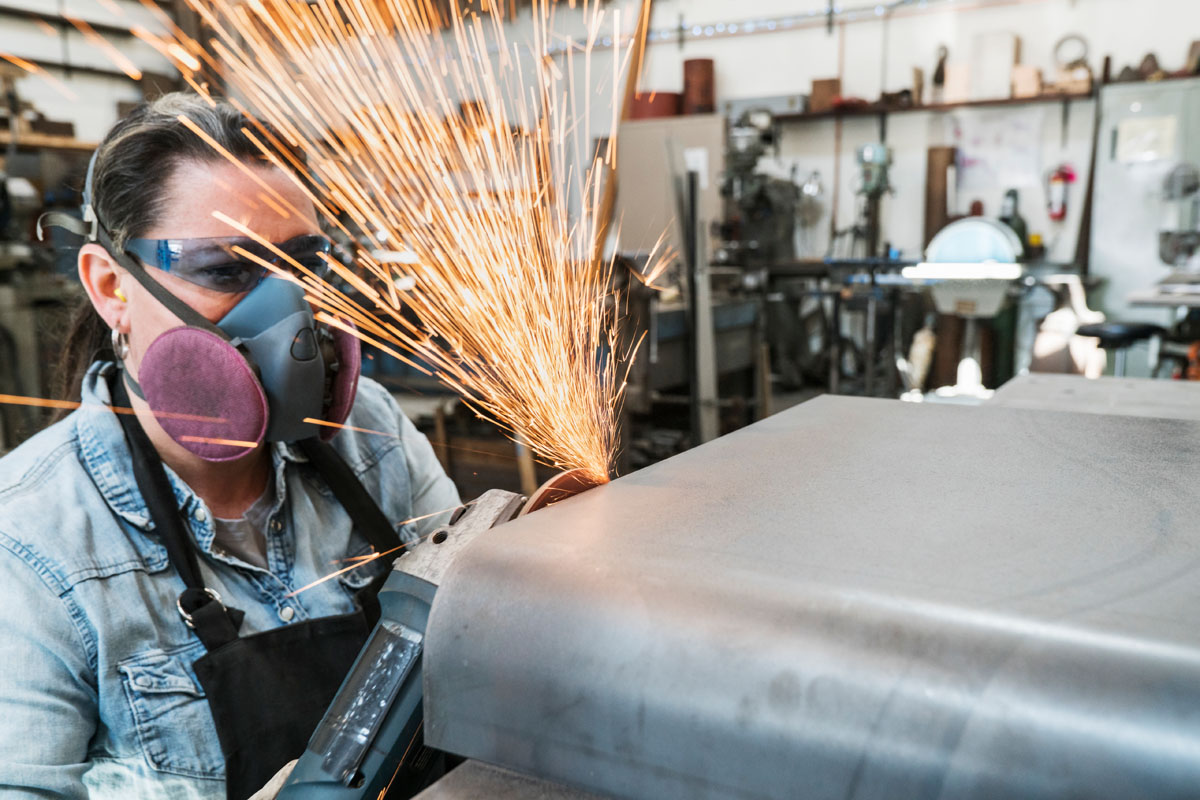Basically, “metal fabrication” is specified as creating products or structures via cutting, bending, and/or putting together metal material. It’s largely deemed as a value-addition process as it comprises of assembling actual pieces or structures from raw metal material.
Basically, “metal fabrication” is specified as creating products or structures via cutting, bending, and/or putting together metal material. It’s largely deemed as a value-addition process as it comprises of assembling actual pieces or structures from raw metal material.
Projects typically consist of 3 steps: 1) design, in which the shop drawings are drafted to the planned measurements; 2) fabrication, which includes the previously mentioned cutting, bending, and/or putting together; and lastly, 3) installation, in which the final product or structure is assembled (partly or fully).
Metalworkers usually work with a variety of raw materials that can include various kinds of metal like expanded metal, plate metal, wires and rods for welding, and casted metal. Basically, fabrication is a vital step in creating any type of finished metal piece or structure.
Metalworkers typically work in either a machine shop or an established metal fabrication shop that concentrates on anything from metal prepping to fabrication. Though not as commonplace as the kinds of metal fabrication that is discussed in this post, boiler-makers, iron workers, and blacksmiths have also historically been deemed metalworkers.
There are different separation levels which will be touched on in this post including three of the most commonplace kinds of metal fabrication: industrial metal fabrication, structural metal fabrication, and commercial metal fabrication.
Industrial Metal Fabrication What Is It?
As you can most likely guess, industrial metal fabrication is the method of integrating different parts or assemblies — usually made from sheets or plates — into industrial products, such as shelving.
Industrial fabricators usually serve sectors like aerospace, alternative energy, material handling, contamination engineering, water treatments, automotive, and more. The products they produce are typically very large and often include the use of silos tanks, and heavy machine components.
Different from structural metal fabrication, which will be covered in the following section, industrial metal components are usually used as complements to one another.
Structural Metal Fabrication What Is It?
High-tensile structural metal is one of the more favorable materials utilized in the construction industry presently, whether the piece is commercial, industrial, or residential in character. Acknowledging this, structural metal fabrication involves making structural metal components for these kinds of applications, like I-beams.
Because of its model strength-to-mass ratio, steel is the more favorable metal utilized for metal fabrication for structural intentions, as just about any kind of construction project uses the material in some conceivable way.
Commercial Metal Fabrication What Is It?
Commercial metal fabrication comprises of creating the components that are usually installed in commercial locations like restaurants, public areas, stores, and civil buildings.
Another kind of commercial metal fabrication is ornamental or decorative metal. These kinds of metal products are usually designed to be installed on the exterior of commercial buildings to give them an improved appearance and more curb appeal.
ARTISTIC ALLOYS & DESIGN OFFERS CUSTOM METAL FABRICATION IN ARIZONA, CALIFORNIA, COLORADO, & MORE
Artistic Alloys & Design offers metal design and fabrication for the entire US! If you live anywhere in the Phoenix Valley and want to have some custom metal work done, Artistic Alloys & Design can craft any type of metal item you want. From entry doors to range hoods or stair railings we have precisely what Arizona businesses and homeowners are looking for.




